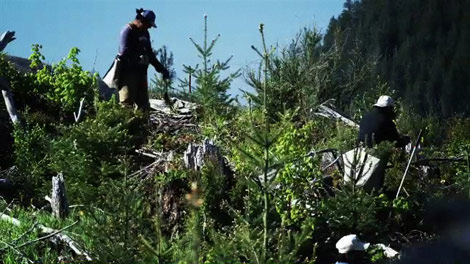We’ve written often in recent years about the tremendous outlook for cross-laminated timber (CLT) and other mass timber products. One of the most vocal advocates for the use of CLT in the construction of tall buildings is British Columbia architect Michael Green, who starred a few years ago in a series of wood-building videos sponsored by the Washington Forest Protection Association, the Washington Contract Loggers Association, the Family Forest Foundation and the Washington Farm Forestry Association.
Now we are starting to see the power of mass timber inspire young people in Washington to enter the forestry industry.
From Building Products Digest:
Mika Donahue is an undergraduate student at Oregon State, studying renewable materials. She is smart, enthusiastic and insightful. Mika grew up in Vancouver, Wa., at her family’s business, RLD Company, a provider of independent timber and glulam fabrication. Founded in 1984 by her grandfather, RLD has manufactured product for notable and impressive projects in its relatively short history, like the Hiroshima Bridge and the Pavilion at Lincoln Park Zoo in Chicago.
Interestingly, though, it wasn’t growing up in the lumber yard that solidified a future in forest products for Mika. It was a TED Talk.
“While I have always loved the structural aesthetic of wood structures, it wasn’t until I watched a TED Talk from Vancouver-based architect Michael Green regarding the environmental necessity of mass timber building that I really found my spark. Learning about wood’s ability to sequester carbon and mitigate greenhouse gas emissions added a whole new level of importance to my understanding of forestry and wood construction; it set the stage for my academic pursuits,” she said.
Mika now finds herself talking with her peers about this perception vs. reality problem our industry tends to have, and she’s encouraged that the up-and-coming generation is so open-minded. “My generation is acutely aware of environmental impact. When I take even a few moments to explain reforestation, or phasing out concrete and steel for wood products, the light bulb goes on for them.”
Donahue is featured in an op-ed by two wood-science leaders from Oregon State University, about their efforts to break down the misperceptions that some young people have about the forestry industry.
That drive to make the world a better place is a common theme among students enrolled in our undergraduate program at Oregon State University. For the most part, our students come in knowing very little about what’s possible in the industry. It’s up to us to help them forge a path to working in a field where they view their company as sustainable and working to preserve the environment.
How do we identify and recruit these students to help fill the next generation of forest products industry professionals? It’s a very organic, boots-on-the-ground sort of approach. Our location in Oregon means we’re in the middle of one of the most active forest production regions of the country. Still, this doesn’t always translate to kids like Mika becoming young adults who know what we do and why.
Much of our time is invested in career technical education (CTE) students at the high school level all across Oregon and Washington. These students have already demonstrated an interest in hands-on work, and a willingness to learn outside of the traditional classroom setting.
The teachers of these CTE programs are integral to our student recruitment efforts. They will invite us to visit their classes to present about careers in the forest products industry. They will participate in professional development opportunities that we offer for CTE teachers, during which they learn what the OSU College of Forestry is, and enhance their own knowledge and careers. Taking the message of our program back to their students results in heightened interest, and ultimately, more students enrolling than in the past.
We’re still working to overcome the public perception that the forest product industry is clearcutting. It doesn’t take long for our students to become stewards of the truth, but it remains an uphill battle to educate the public at large. One student at a time, they grab onto the beauty of what we do, and we hope, spread the word.
